One Flower One Grass | Cultivation History and Classification of Roses
Northwest Agriculture and Forestry University
Zhang Qingyu, College of Landscape Architecture and Art

A new sign of flowers, half belongs to the east wind and half belongs to the dust.
Only this flower blooms endlessly, occupying all four seasons of spring throughout the year.
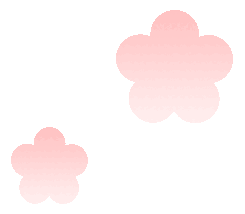

Chinese rose (scientific name: Rosa chinensis) is called the "Queen of Flowers" and is called "Rose" in cut flower applications. It is an evergreen or semi-evergreen low shrub that can be used as an ornamental and medicinal plant. As one of the three major cut flowers in the world, it is widely distributed around the world and symbolizes auspiciousness, beauty, happiness and love.
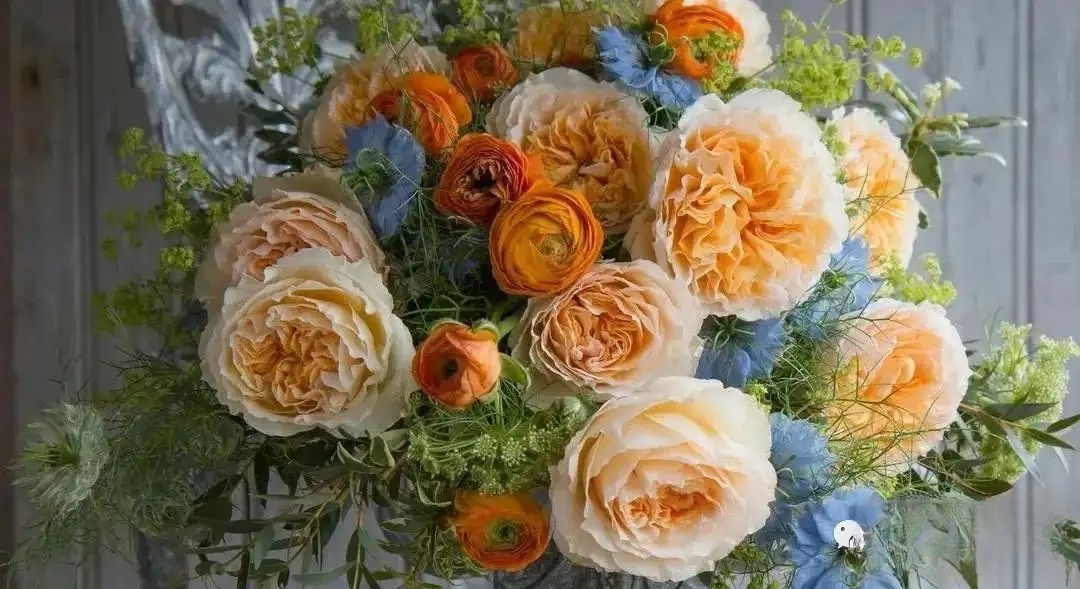

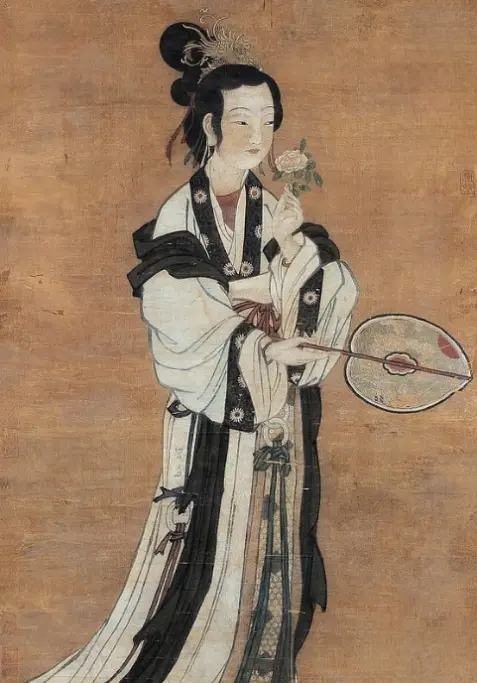
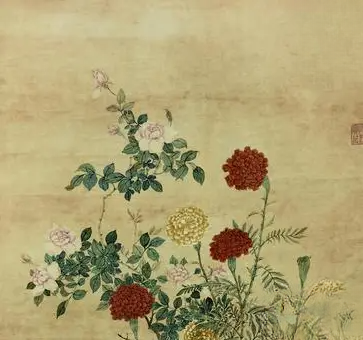
Qian Weicheng
Detail of "Longevity and Eternal Spring"
The Rose Catalogue written by the owner of the Flower Evaluation Hall in the late Qing Dynasty recorded 10 kinds of ancient Chinese roses that were considered the best: 'Blue Sky Jasper' (white), 'Golden Bowl with Yellowing' (yellow), 'Chaoxia Colorful Clothes' (yellow), 'Guoguo Light Makeup' (white), 'Red Dragon with Pearls' (red), 'Xiaofeng Cangyue' (white), 'Light Yellow' (yellow), 'Spring Water Green Waves' (white), 'Six Dynasties Gold Powder' (yellow), 'Yuye Furong' (white), 'Blue Sky Jasper' and 'Silver Red Peony'. These top-quality roses were in the world's leading position in rose breeding at that time, but unfortunately most of them have been lost. After the Qing Dynasty, rose cultivation and breeding have been in a state of stagnation, gradually losing their former glory.
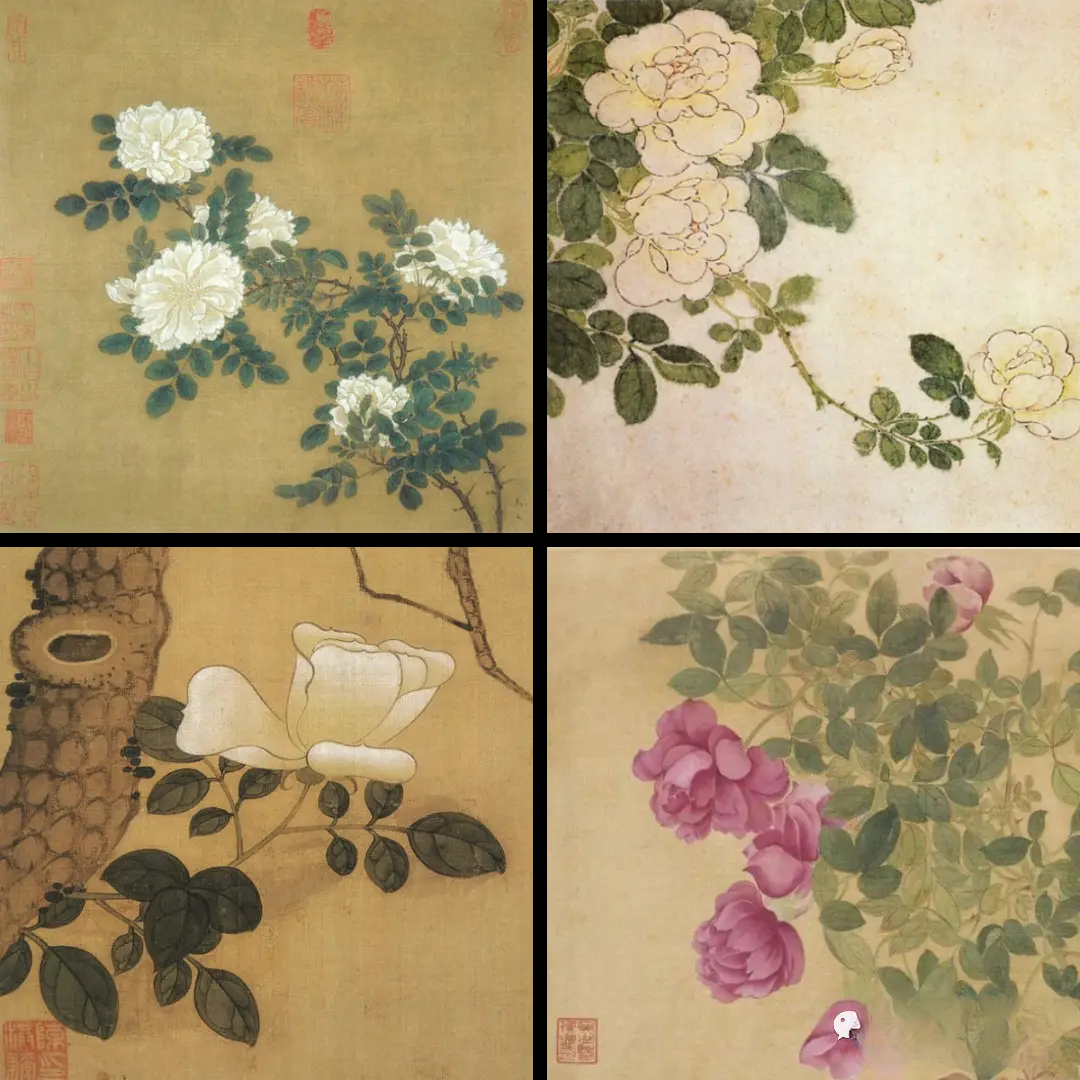
From left to right: White Rose by Ma Yuan of the Song Dynasty, Rose by Fan Qi of the Ming Dynasty,
Rose by Chen Laolian of the Ming Dynasty, Rose by Yun Shouping of the Qing Dynasty

In general, the history of Chinese rose cultivation can be divided into the following four stages:
(1) Buds: Ancient times to the Han Dynasty
As early as in ancient times, our ancestors had already begun to use rose plants. The Eocene rose leaf fossil unearthed in Fushun, Liaoning, is 40,000 years old. The Huashan rose, a flower pattern in the Miaodigou during the Neolithic period, should be the earliest mark of human use of rose plants. A large number of artifacts were found in the Miaodigou type site of the Yangshao period (5000 BC to 3000 BC). These painted pottery artifacts were considered by archaeologists to be sacrificial artifacts. Among them, the pottery with painted decorations has patterns of flowers of the Rosaceae family. The Miaodigou type is distributed in Guanzhong, southern Shanxi and western Henan, north to the Hetao area, south to the northern part of the Han River, west to the Tao River in Gansu, and east to Zhengzhou, Henan. This shows that there were a large number of rose plants distributed in the Yellow River area thousands of years ago, and they were integrated into the lives of ancient ancestors. In the article "Research on Huashan Flower Totem", Xu Lu speculated that rose (rose) was used as a totem plant for worship by ancient ancestors.
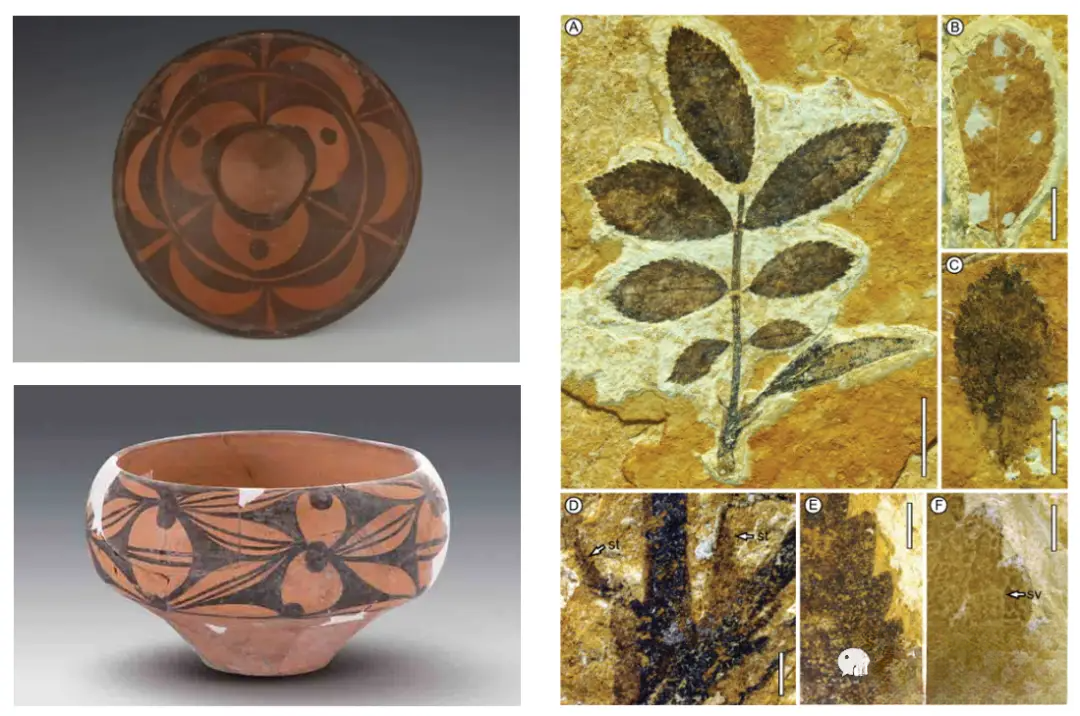
Rose pottery jar excavated from the Yangshao culture site in Miaodigou, Shan County, Henan Province (left)
Fossils of the genus Rosa unearthed in Wenshan, Yunnan (right)
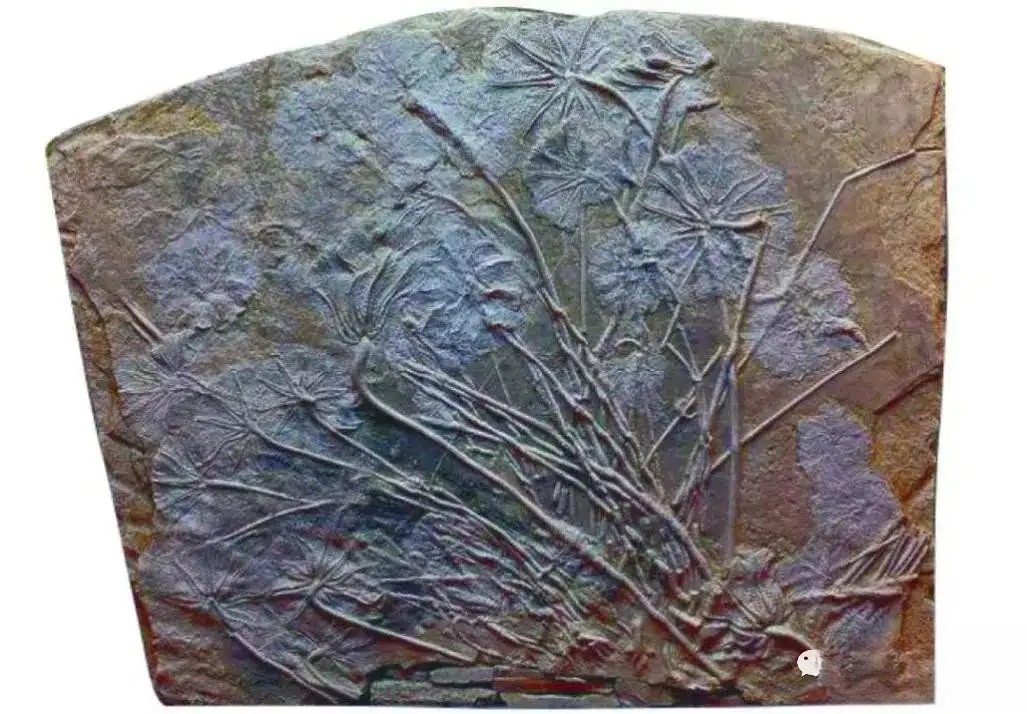
During the Warring States Period, Qu Yuan wrote in "Chu Ci·Nine Songs·She Jiang": "Dews are on the magnolia, and the dead forest is thin." It is said that Dew is also called Jinbeidui, which is the fragrant rose). During the Warring States Period, the people of Chu State had begun to plant and utilize a variety of plants such as Jinbeidui and fragrant roses, and established orchid gardens, iris gardens, and angelica gardens for planting. According to the above records, most of them are speculations, and there is no conclusion yet.
It is said in Jiashi Shuo Lin that "Emperor Wu (140-87 BC) and Lijuan were watching flowers. At that time, the roses were just beginning to bloom, and they looked like they were smiling. The emperor said: This flower is better than a beautiful woman's smile. Lijuan joked: Can smiles be bought? The emperor said: Yes. Lijuan then took out 100 kilograms of gold as money to buy smiles, and offered the emperor a day of pleasure. The rose was named "Buying Smiles" from Lijuan". It is recorded in Xijing Zaji that "there are rose trees growing naturally in Leyou Garden (Emperor Wu's)". Since then, roses have been planted in the Han Dynasty. Although roses had not yet appeared during this period, plants of the genus Rosa had been widely used and played a key role in the birth of roses.

(2) Development - Tang and Song Dynasties
During the Tang and Song dynasties, a large number of poems about roses began to appear, and the name of the flower first appeared in ancient books. The Tang Dynasty poet Jia Dao's "destroy thousands of houses to make a pond, plant roses instead of peaches and plums", shows that roses had become ornamental flowers in the Tang Dynasty and were introduced for cultivation.
In the silk painting "Guiding Bodhisattva" of the late Tang Dynasty, roses with characteristics almost identical to modern roses, such as upright, large flowers, high core and upturned corners, appeared. Song Qi of the Northern Song Dynasty first recorded roses in "Brief Records of Yibu Fangwu": "This flower is what the East calls a four-season flower, with green vines and red flowers, and little frost and snow. This flower blooms once in December throughout the year, blooming all year round, and blooming once a month, regardless of cold or heat, as if it is permanent." In the tenth volume of "Huaji" by Deng Chun at the end of the Northern Song Dynasty, there is a record of Huizong's appreciation of roses. It says: "Huizong built Longde Palace and ordered the imperial attendants to paint the screens and walls in the palace. They were all the best of the time. When the emperor came to visit, he did not praise any of them, but only looked at the roses with slanting branches on the arches of the column corridor in front of the Huzhong Palace. When asked who the painter was, he was a young man who had just come in. The emperor was pleased and gave him red and praised him very much. No one could figure out the reason. The attendants asked the emperor, and the emperor said: There are few people who can paint roses, because the four seasons, morning and evening, flowers, stamens, and leaves are all different. This painting is in spring and noon, and there is no difference, so I rewarded it generously." It can be seen that roses were planted in the court of the Northern Song Dynasty at that time, and Huizong observed roses very carefully. According to Wang Guoliang's research, painters Zhao Chang, Cui Bai, Ma Yuan and others in the Song Dynasty all left behind the true appearance of ancient large-flowered double-petaled roses. In the tenth volume of "Wulin Jiushi" by Zhou Mi at the end of the Southern Song Dynasty, "Zhang Yuezhai's Enjoyable Things" has an entry of "Watching Roses in the Flower Garden". In the second volume of "Dream of Liang Lu" by Wu Zimu at the end of the Southern Song Dynasty, "Late Spring", there is a record that "this month, the spring light is about to end, and all flowers are in full bloom, such as peony, peony, deutzia, costus, phenoxylum, rose, golden yarn, jade hydrangea, small peony, crabapple, brocade plum, wandering, rose, powder ball, azalea, treasure phase, thousand-leaf peach, red peach, fragrant plum, purple smile, Changchun, bauhinia, goldfinch, smile, fragrant orchid, narcissus, azalea and other flowers, all kinds of wonderful. Flower sellers put them in horse-head bamboo baskets, sing and shout in the market, and buyers are everywhere. At this time, carved beams are chirping, orioles are singing in the beautiful railings, quiet courtyards and bright pavilions, people are enjoying the scenery, it is not easy to describe it in one word." Rose was already a common flower in the Southern Song Dynasty. The large number of rose poems in the Song Dynasty shows that rose was widely cultivated at that time.
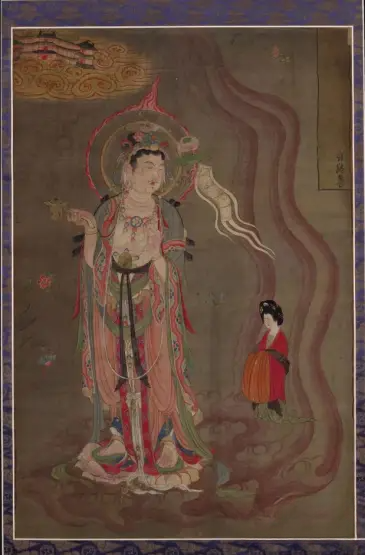
Tang Dynasty Guide Bodhisattva
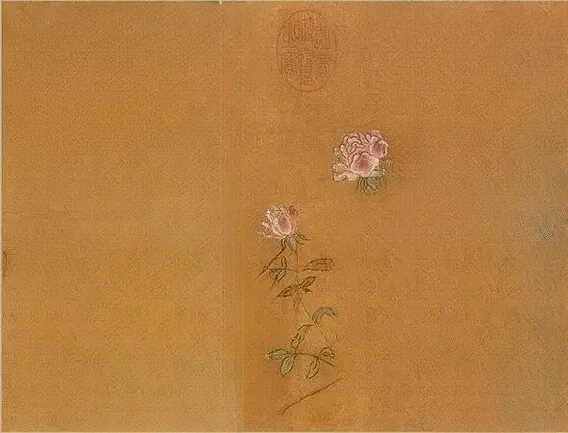
Yang Jieyu of the Southern Song Dynasty: Hundred Flowers Scroll
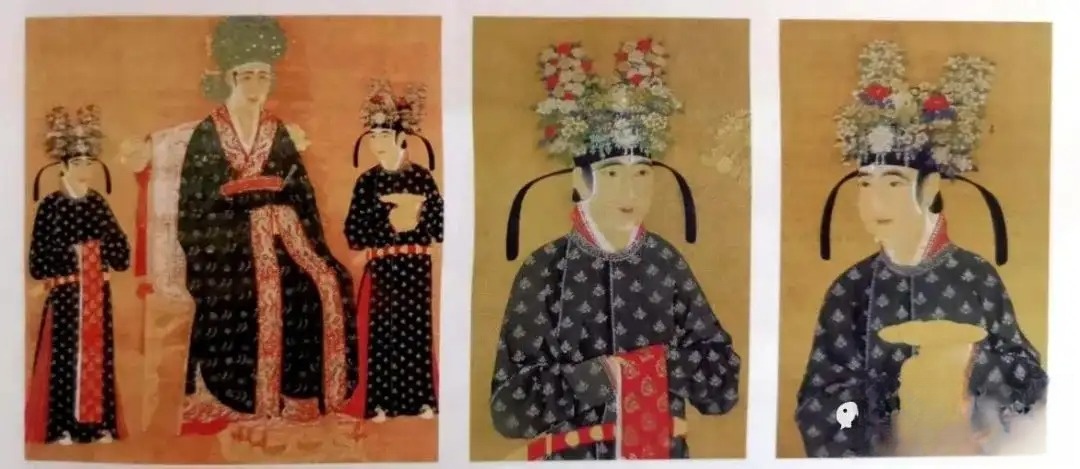
The hairpins of the palace maids on the left and right sides of the Portrait of the Empress of Song Renzong are roses

(3) Stagnation - Yuan Dynasty
The Yuan Dynasty is a special page in Chinese history, a dynasty established by the Mongolian people. Because the Mongolians were engaged in nomadic animal husbandry and were still in a slave society, ethnic conflicts became increasingly acute, society was turbulent, and there were relatively few cultural relics related to roses, and the development of rose culture entered a relatively slow period.
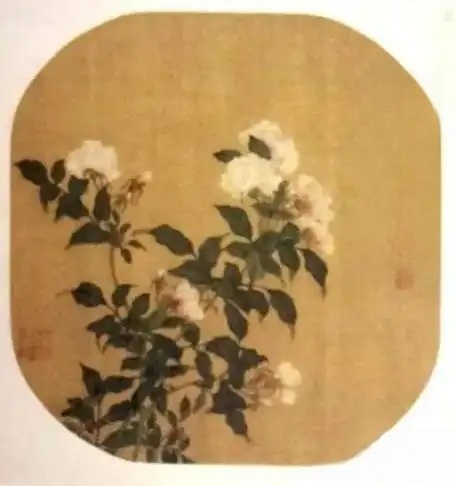
Tang Di's Rose Picture from the Yuan Dynasty
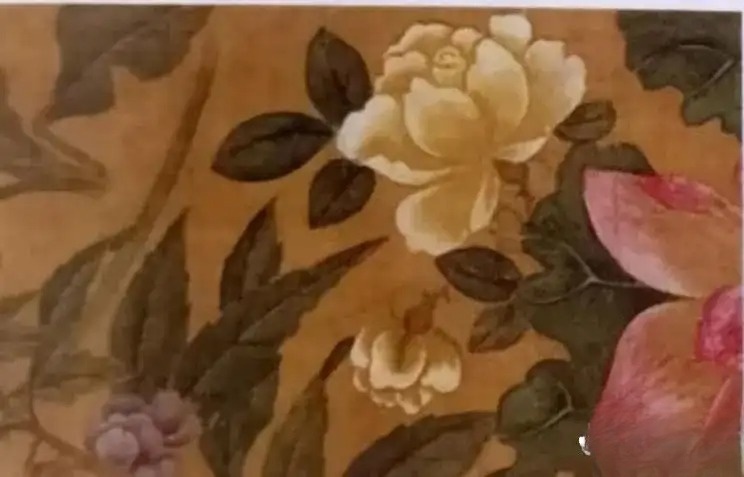
Wang Yuan of the Yuan Dynasty: Flower Painting in Color (part of a rose)

(4) Prosperity - Ming and Qing Dynasties
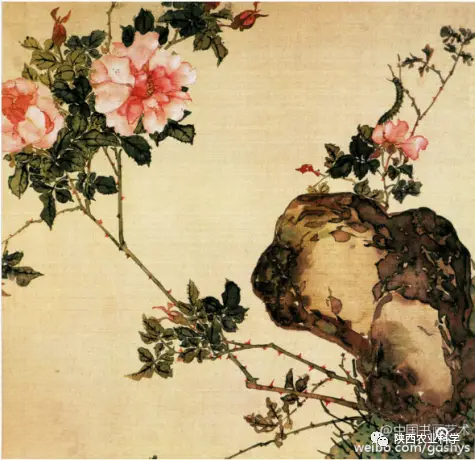
Ju Lian, Qing Dynasty, "Rose Picture"
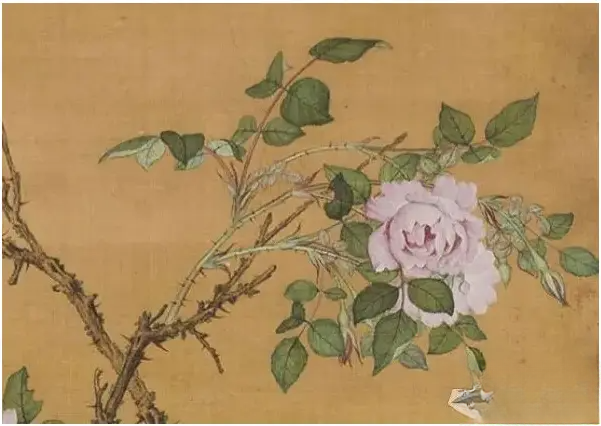
Part of the painting "Longevity and Eternal Spring" by Lang Shining of the Qing Dynasty
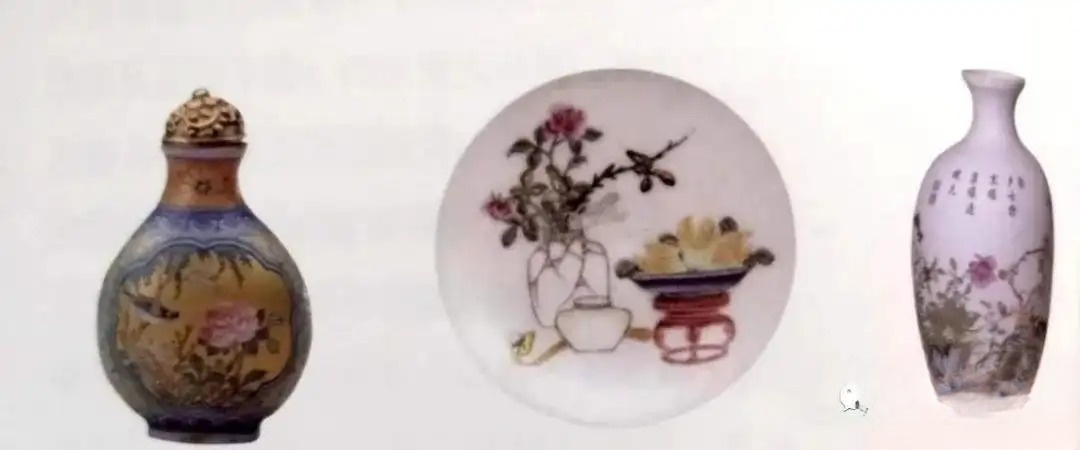
Qing Dynasty Qianlong Rose Pattern Porcelain
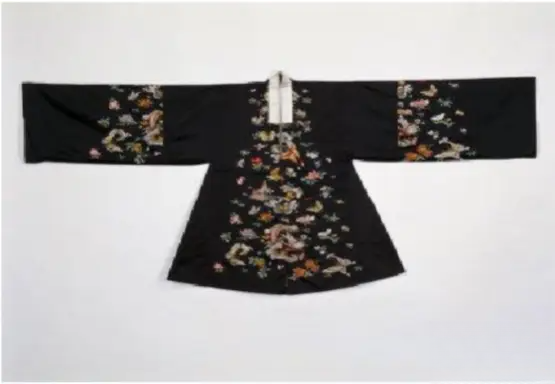
Qing Kangxi black ground flower and butterfly pattern brocade satin women's cape
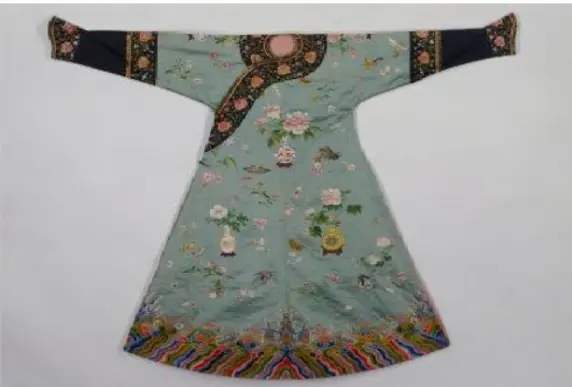
Light green satin embroidered bogu floral pattern robe, Qianlong period, Qing Dynasty

It was not until the 10th century that Europeans saw Chinese roses in paintings and called them China roses. In the 16th century, Chinese roses began to be planted in Italy, and the painter Bronzini painted a portrait of Cupid holding a Chinese pink rose.
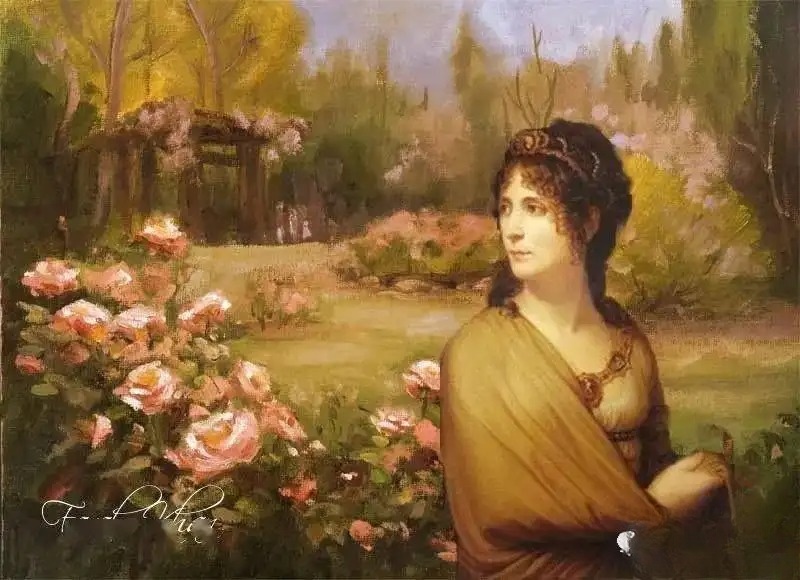
Josephine Bonaparte and her rose garden
Josephine also asked a botanical artist to draw the rose plants she collected into a "Rose Atlas". Half of these roses came from France and bloomed once a year, with only the Damascus rose blooming twice. There were also 22 Chinese rose varieties with rich colors and repeated blooming. They were the most ornamental of all varieties and were deeply loved by Josephine.
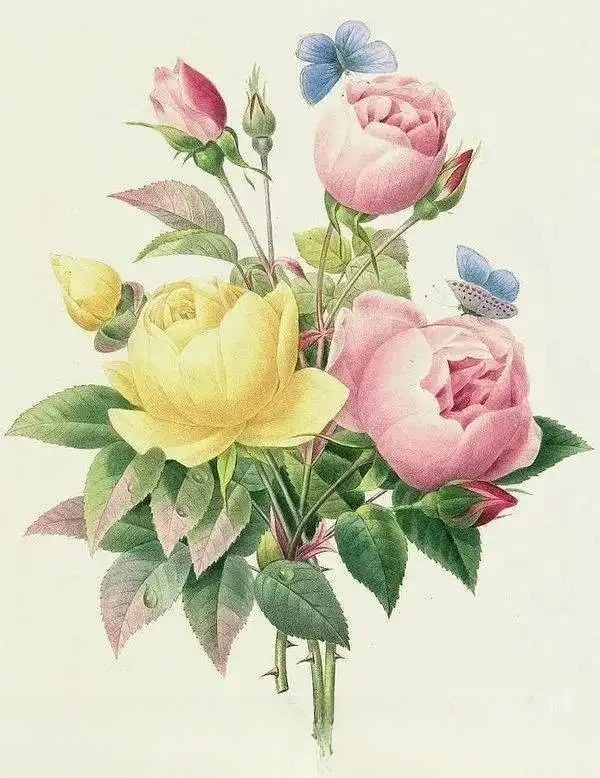

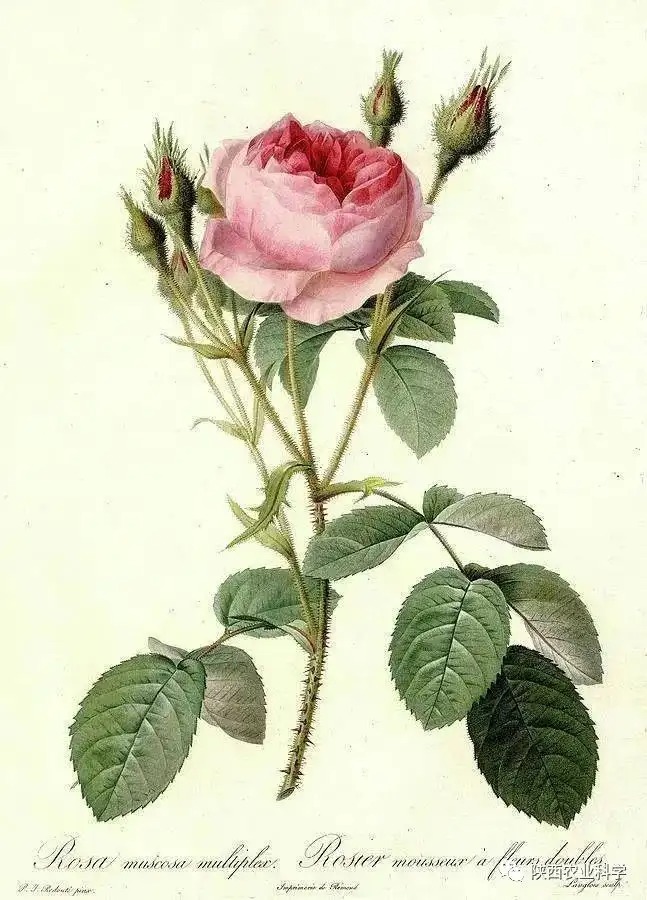
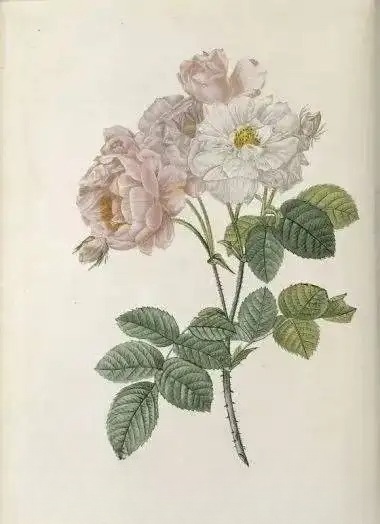
In the life of modern roses, half of the blood of Chinese roses flows. From the mid-18th century to the early 19th century, Chinese roses, known as Chinese roses, entered Europe and the United States one after another, bringing about earth-shaking changes in European roses. The hybrid breeding of Chinese roses and European roses formed a trend.
The international horticultural community calls roses before 1867 ancient roses, and roses after 1867 modern roses, with the hybrid tea rose "France" successfully cultivated in France in 1867 as the dividing line. This rose has many advantages such as blooming all year round, rich colors, huge flower volume, strong cold resistance, etc., and soon became the mainstream variety of roses in the world. Today, there are more than 30,000 rose varieties in the world, of which 11,000 are hybrid tea roses.
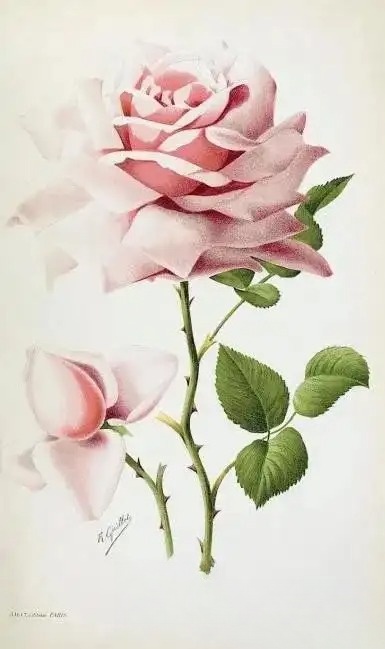
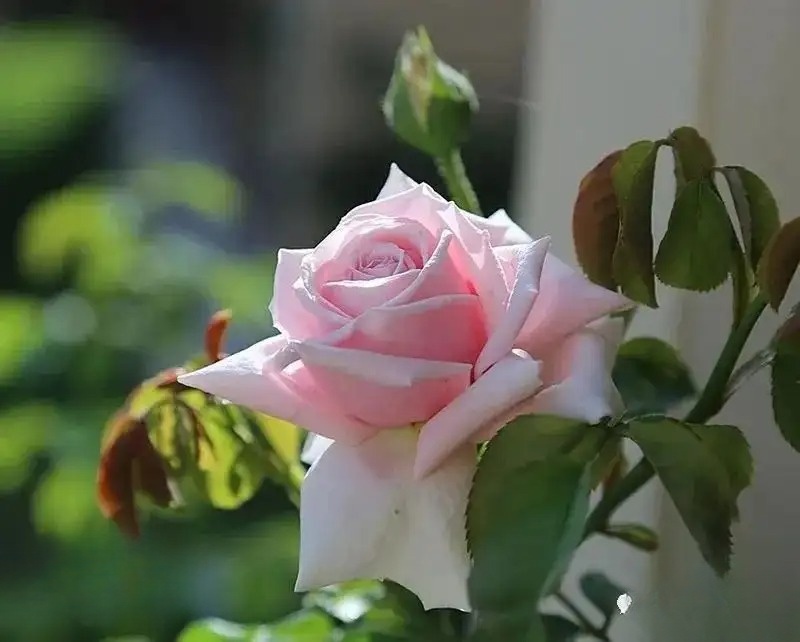
Rose variety 'France'
There is a piece of history that can be called a legend of roses, that is the "Peace" bred by German breeder Francis Meylan. It was bred in 1939. In order to avoid fascist destruction, he sent it from France to the United States with the code name 33540. On April 29, 1945, the American Pacific Rose Association officially named it "Peace", the day when the Allied Forces conquered Berlin and Hitler perished. The post-establishment meeting of the United Nations was held in San Francisco, the United States. The Secretary-General of the American Rose Association, Ray Oren, gave each of the 49 UN representatives a "Peace" rose and added a note to the bouquet: "We hope to promote the maintenance of lasting world peace through this."
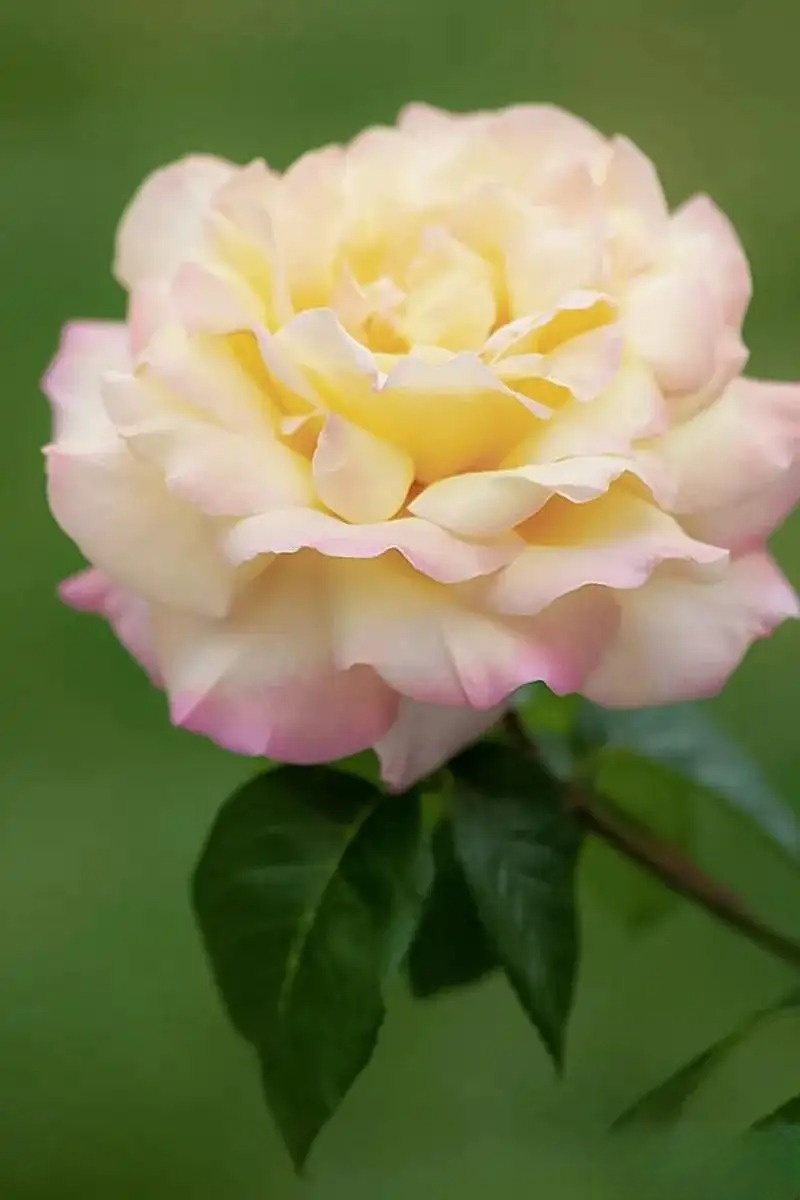
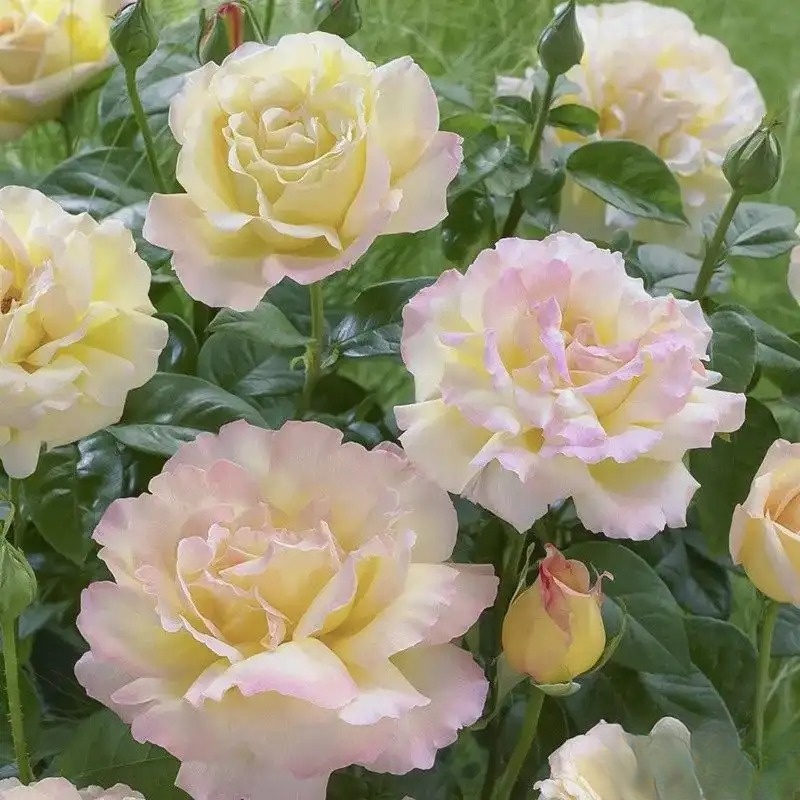
Rose variety 'Heping'
There are records of roses in Europe as early as more than 600 years BC. However, from the Homeric era in Greece in the 9th century to around 1800 AD, the rose plants cultivated and bred in Europe were mainly French rose, centifolia rose and Turkic rose, and there was no major breakthrough in breeding work.
In 1800, Britain had a large rose nursery. In 1815, it began to hybridize roses produced in China or Europe, and most of them were French roses. According to the "British Gardening" published in 1827, there were 1,059 rose plant varieties at that time. The British paid special attention to the collection of breeding resources. In addition to Europe, they also collected breeding resources from all over the world, especially China. This is an important reason why Britain is in a leading position in the world in rose breeding.
The United States began collecting rose varieties in 1773, and by 1846, at least 700 rose varieties were recorded. In 1811, Chinese roses were introduced to the United States and hybridized with southern European musk roses, resulting in a large number of new rose varieties.
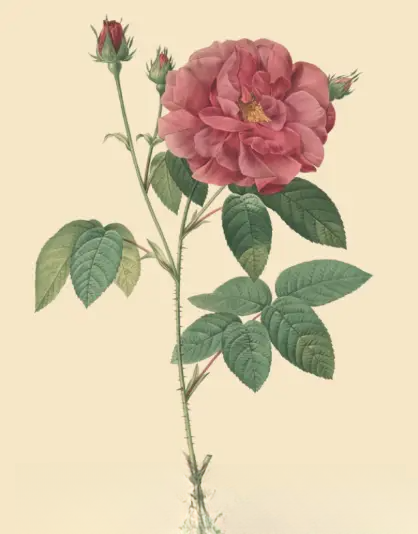
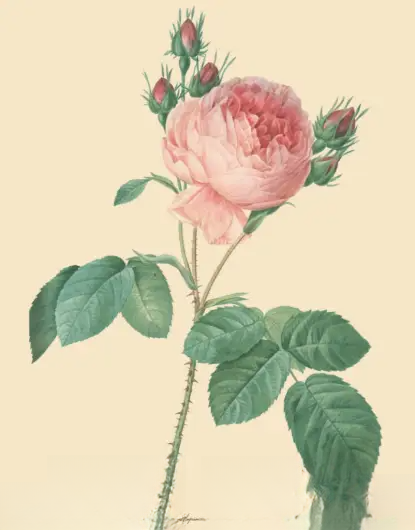
Major Centifolia rosea
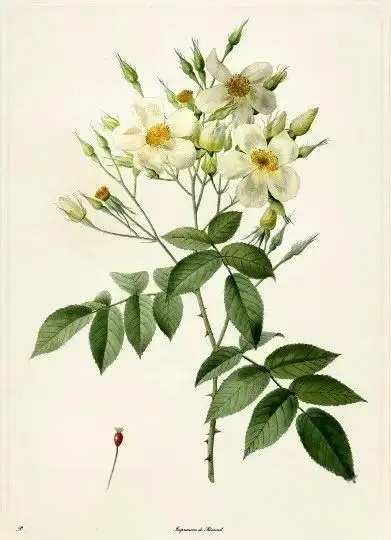
Musk rose
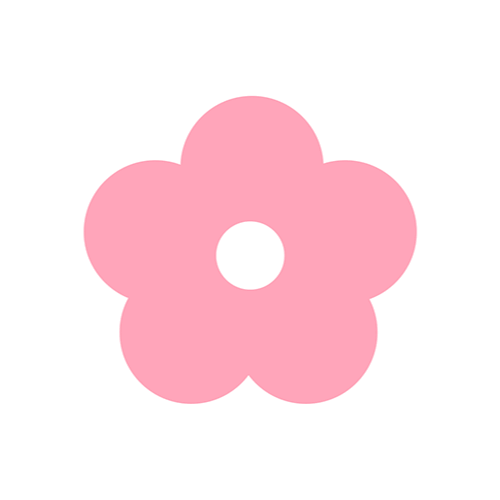
The first country in Europe to use roses for rose breeding was France. In 1815, France hybridized Chinese roses with Rosa tauriculata and produced a large number of Bourbon rose hybrids. The number of rose varieties on the French market increased from 25 in 1860 to 6,000 in 1870.
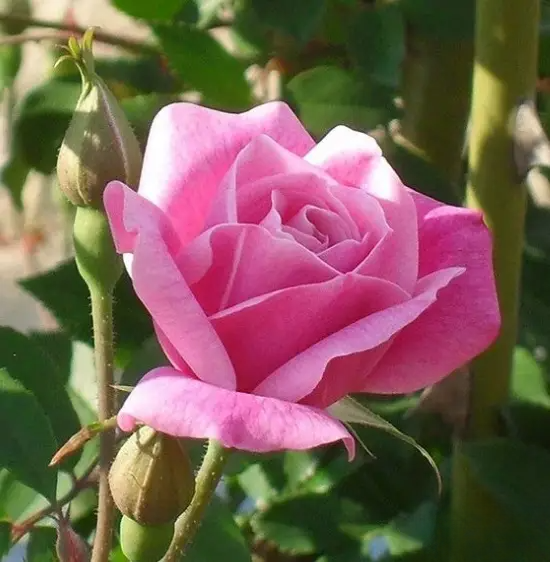
Beautiful
Flowers

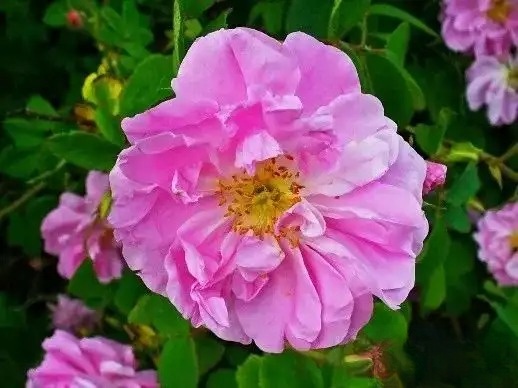
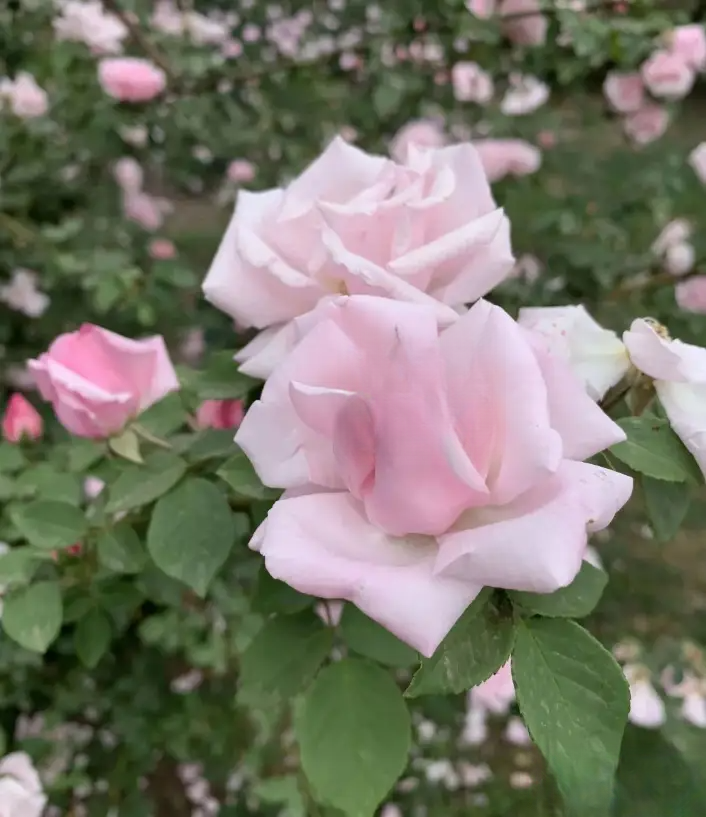
|From top to bottom: Chinese ancient rose 'Yueyuefen', Turkic rose, Bourbon rose 'Catherine Harrop'

As one of the top ten traditional famous flowers in China, the history of rose can be traced back to the period of Emperor Wu of Han more than 2,000 years ago. In the Tang and Song dynasties more than 1,000 years ago, breeders selected and bred Chinese rose varieties that are almost the same as "modern roses" and bloom all year round.
Around the 18th century, Chinese roses were introduced to Europe, and then repeatedly hybridized with European roses to produce "modern roses". In the 20th century, "modern roses" returned to their homeland and became one of China's important flowers. However, after development, the meaning of "modern roses" is different from the original roses. It is a fusion of the bloodline of Chinese roses, wild roses and European native roses. It is both the development and inheritance of Chinese roses.

4.1 Classification by time
Roses can be divided into ancient roses and modern roses by time. In 1966, the American Rose Society defined the rose cultivars (including variants) before 1867 as ancient roses, and the cultivars cultivated after 1867 as modern roses. There are differences between ancient roses and modern roses. The early ancient roses were like roses, with creeping stems, single petals, and red flowers. With evolution and selection, upright plant types appeared, petals changed from single petals to multiple petals, and the flower colors changed to red, white, and even more colors.
Before the 18th century, common European rose varieties included Rosa rugosa, Rosa dasyphylla and Rosa centifolia. The rose color of this stage was mainly red, and it did not have the characteristic of blooming all year round. China's ancient roses include Catharanthus roseus, Baoxianghua, Shouke, Yueyuehong, Yueyuefen, Sijihua, Douxuehong, Shengchun, Guansheng and Chuchuyou, which can bloom in all year round.
From the late 18th century to the early 19th century, four varieties of Chinese roses that bloom all year round, namely, Yueyuehong, Yueyuepin, China Caiyun and China Danxiang, were introduced to the West. They were repeatedly hybridized with French roses and roses from other European countries to form new varieties of roses with high ornamental value and that bloom all year round, thus opening a new chapter in modern roses. Compared with ancient roses, modern roses have a stronger plant shape, larger flowers, more petals and richer colors.

1. French rose
Latin nameRosa gallica
An upright shrub about 1.5 meters high, the French rose has a very strong and unique fragrance, strong resistance, and beautiful branches and leaves. It is native to Central Europe, Southern Europe and Western Asia, has a long history of cultivation, and has many horticultural varieties.
Variant 1 : Belle Isis. The historical significance of this French rose was highly praised by David Austin, who used Belle Isis to breed the first Austin rose. This rose has a unique myrrh scent, which is the source of the myrrh scent in all Austin roses.
Variety 2 : Charles de Mills. It is about 1.5 meters tall , with large flowers up to 12 cm, deep red and purple, and has a strong aroma. There are almost no thorns on the branches, the leaves are dull and hard, and it blooms once in spring or early summer. It has good shade tolerance and strong disease resistance, and the flowers last for several weeks. (The parents of these two roses are too old to be known)
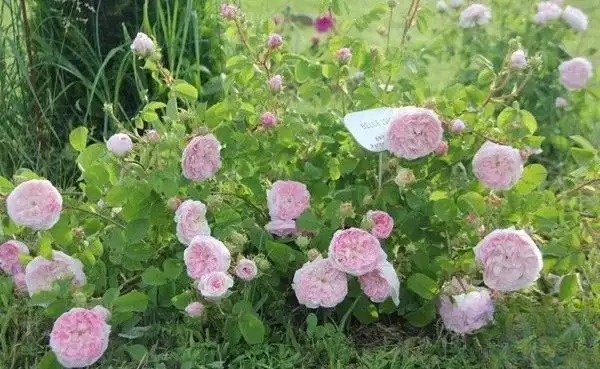
Isis the Beauty
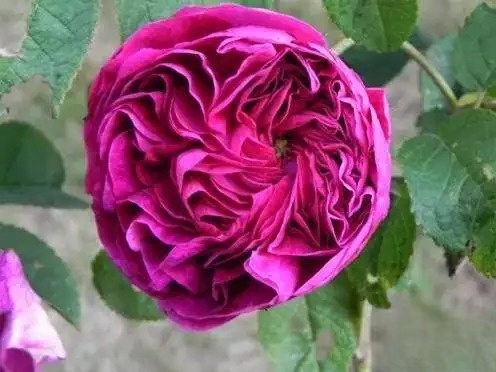
Charles DeMilles
2. Rosa turcica
Latin nameRosa damascena
Shrub, about 2 meters high. 6-12 flowers arranged in corymbs; slender pedicels with glandular hairs; flower diameter 3-5 cm; petals pink; separate styles, hairy. Fruit pear-shaped or obovoid, red, often with prickles. Originated in Asia Minor, it has been cultivated in southern Europe for a long time and is used as a raw material for making essences, with high economic value.
3. Dog Rose
Latin name Rosa canina
Dog rose is named for its buds, which are shaped like dog teeth. It is a shrub with arched or creeping branches and stems. It has five petals and male stamens. Its ovary is located in the flower pot, which provides an extra layer of protection for its female organs. The flowers have a sweet fragrance and range in color from white to dark pink. The flowering period is 5 months, and the fruits are scarlet.
It is a common variety in Europe and grows in temperate regions around the world. It is the main raw material for making jams, syrups, teas and cordials. In addition, Dog Rose is a very important parent in the ancient rose hybrids, and Centifolia Rose and White Rose are its descendants.
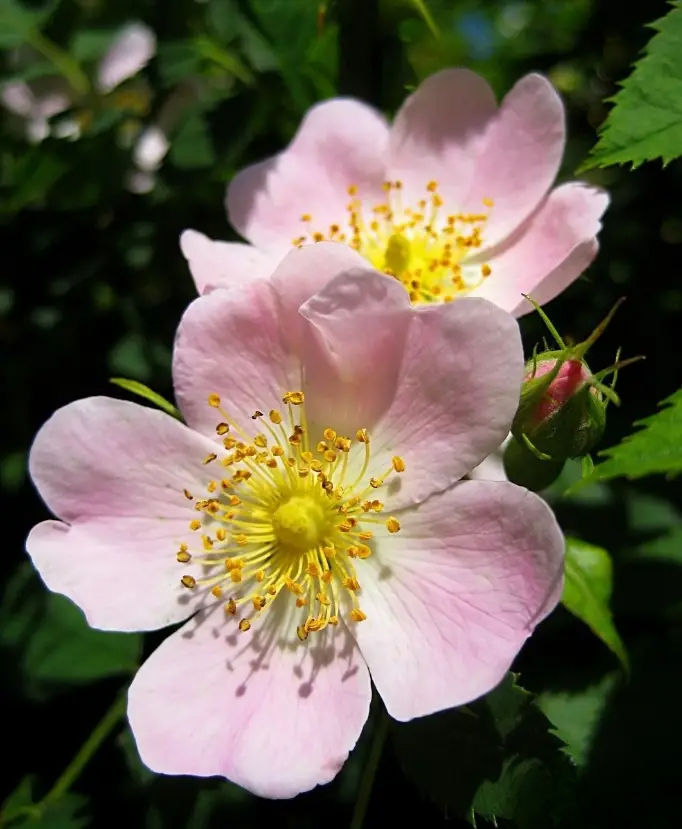
Dog rose
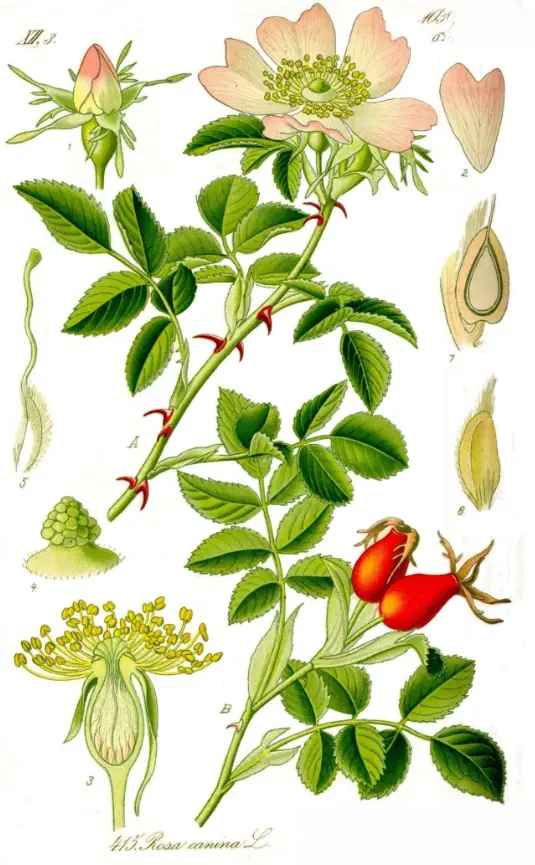

(1) Monthly powder
Latin nameRosa chinensis 'Pallida'
The pink rose is the oldest Chinese variety that blooms all year round. It has a high-hearted, curled-footed flower shape and a light, non-aggressive, soft fragrance. It blooms from mid-to-late March to December in the south of the Yangtze River, and can even bloom all year round in the south. In the past, European roses could only bloom for one season, so in the mid-18th century, when breeders discovered that Chinese roses could bloom all year round, they were very surprised. Ancient roses such as the pink rose were immediately introduced to Europe and used as original parents for hybridization with European roses.
Variety 1: Archduke Charles. The branches are smooth and thornless, and it is a dwarf shrub. It is very disease-resistant, and the flowers are medium-sized, about six or seven centimeters. The colors vary greatly, and the most common color is purple on the outside and pink on the inside, or all pink, and the color gradually deepens to black purple before fading. The single flower period is short, and the petals fall off in one to three days. The flowers are sweet and fragrant, and the fragrance is pleasant. Very abundant flowers, there must be flowers on every branch, and the flowers bloom continuously.
Variant 2: Moon Red
Latin nameRosa chinensis Jacq.
The Yueyuehong rose is one of the oldest roses in China. It is an original variety of Chinese roses and one of the original varieties of Chinese roses first introduced for hybridization in modern European roses. The color of its flowers is red, the diameter of the flowers is generally between 5-8cm , and the height of the plant is about 90-300cm. The color of the flowers is usually very bright red, and they can bloom repeatedly in multiple seasons, and they bloom all year round. If the flowers are well cultivated, it is not a big problem to bloom all year round. The mild tea fragrance is very pleasant and always brings bursts of pleasure. It has strong disease resistance, rarely gets sick, and has a large number of flowers.
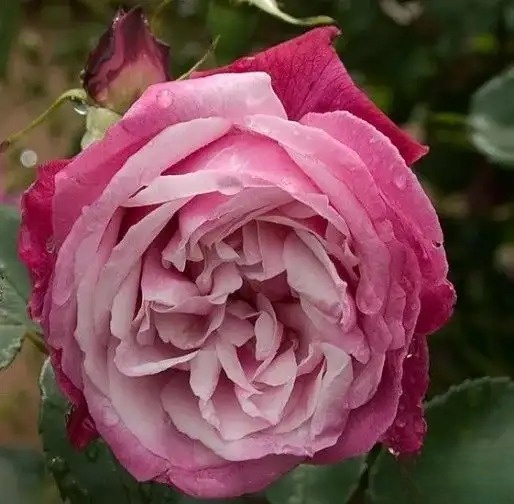
Archduke Charles
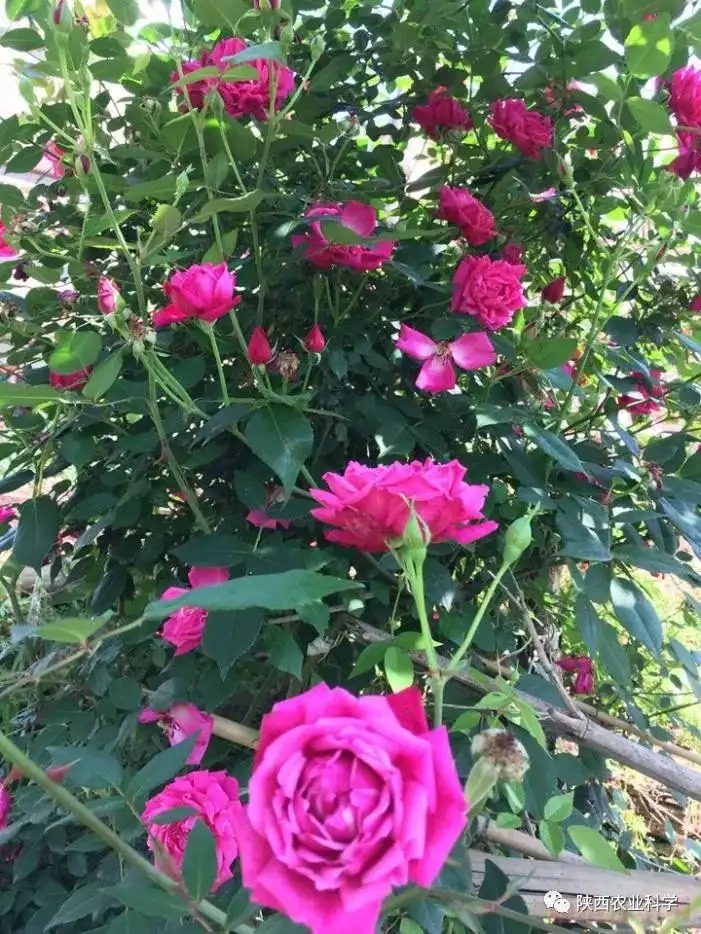
Moon Red

4.2 Classification by habits and morphology
The American Rose Society subdivided roses into 37 subcategories, called the ARS classification system. Later, the Royal Rose Society of the United Kingdom simplified the ARS classification system, reducing the subcategories to 30, called the BARB classification system. Early genetic classification mainly relied on morphological observations, reflecting the blood relationship and evolutionary process between rose strains. It was the first level of rose classification, but it was difficult to judge new varieties between strains, species, and distant hybrids.
The horticultural classification proposed and revised by the Royal Rose Society in 1976 and approved at the Pretoria Conference in South Africa in 1979 is still in use today. It divides roses into six categories. The World Rose Federation divides roses into three categories according to the horticultural classification: wild roses, ancient roses and modern roses. Each category is further subdivided according to living habits, whether it is a vine, whether it blooms continuously, flower size, and whether the flowers are clustered. Ancient roses are subdivided into 13 subcategories, while modern roses are divided into 8 subcategories. This is called the WFRS classification. The horticultural classification has been widely adopted by scholars from various countries as the authoritative classification of roses for a long time.
In 1988, the Rose Branch of the China Flower Association also decided to adopt the horticultural classification method, which divides modern roses into five major systems, namely hybrid tea roses, floribunda roses, strong flower roses, miniature roses and climbing roses.

It is a hybrid of the perfume rose and the hybrid Changchun rose. The characteristics of this variety are rich colors, large flowers, pleasant fragrance, strong growth and strong resistance.
1. Mr. Lincoln
Parents: Chrysler Imperial x Charles Mallerin
Dark red, bred in the United States in 1964, with a strong fragrance, the flowers average 12 cm in diameter, very large, high-centered, cup-shaped bloom form. Tall branches, 90 to 200 cm in height, multi-season repeat bloom, can be used for cut flowers or gardens. Cold-hardy, vigorous, heat-tolerant, prone to black spot.
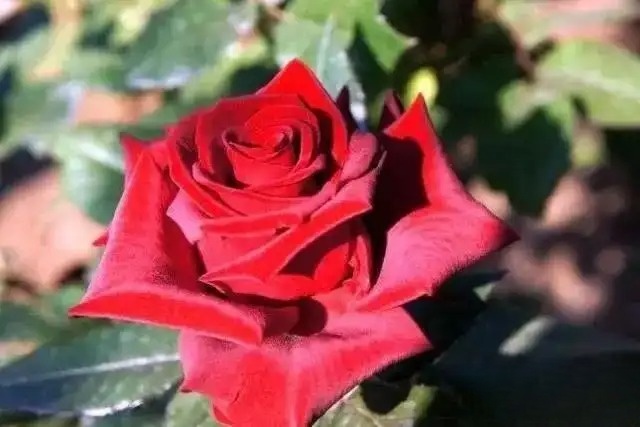
Mr. Lincoln
2. Double Happiness
Parents: Granada × Garden Party
Red and white, bred in the United States in 1977, with a strong spice fragrance, the average diameter of the petals is 12 cm. The height is 90-150 cm, the width is 60--150 cm, it blooms repeatedly in multiple seasons, can be used for cut flowers or gardens, and is cold-resistant.
3. Red Fan
Parents: San Francisco × (Montezuma × Peace)
Vermilion, very large flowers, petals dark red on the back, light fragrance, flowering period 8-10 days, flower diameter 14-18cm, plant height 1.3m. Strong growth , strong disease resistance, bright flowers, long-lasting blooming, suitable for potted plants, altar planting with strong sun resistance.
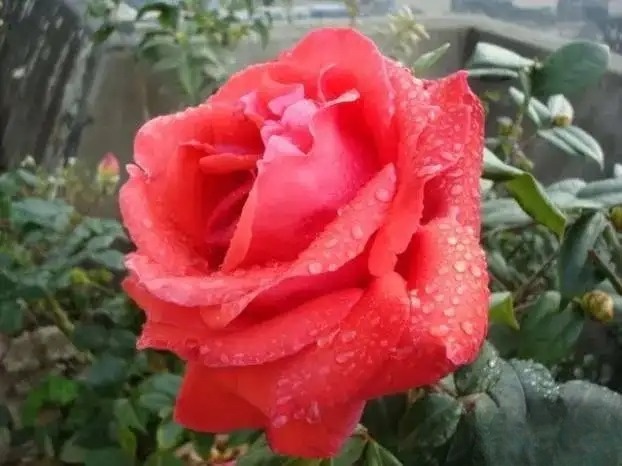
Red Fan
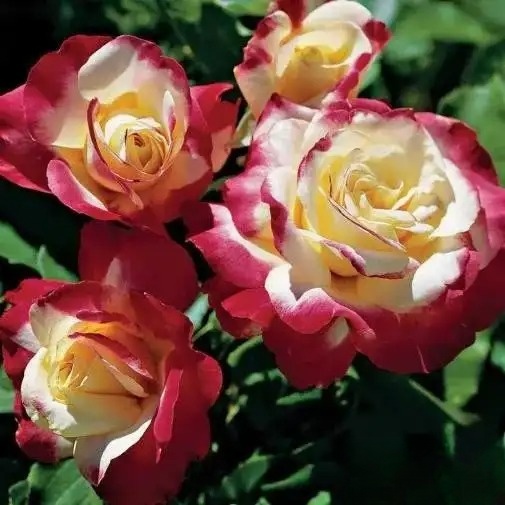
Double Happiness
4. Gold Medal
Granada× Garden Party
Golden yellow fading to beige. Mild fruit, spice, tea fragrance. 30 to 40 petals. Clustered flowers, folded edges. Tall, dense, almost thornless, upright branches, large, semi-glossy, dark green leaves, dense foliage. Height 75 to 185 cm, width 90 cm. Repeat blooming for many seasons, can be used for cut flowers, gardens or specimens. Cold-tolerant, heat-tolerant, disease-susceptible, very disease-resistant.
5. Medal
Parents: South Seas × King's Ransom
Apricot or apricot blend, with a mild, mellow liquorice scent. 35 to 40 petals, average flower diameter 18 cm, height 135 to 165 cm, width 120 cm, multi-season repeat bloom.
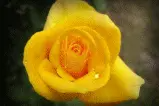
Gold Medal
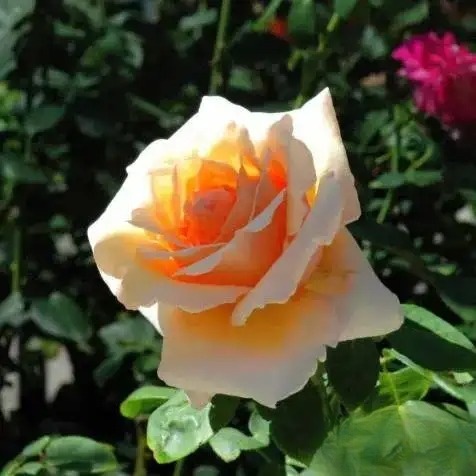
Medal

Also known as multi-flower rose or aggregate rose, it is a hybrid of hybrid tea rose and sister rose. The characteristics of the strain are that the plant is generally expansion-type, with strong branching ability and beautiful tree shape. The leaves and thorns are like hybrid tea roses, but slightly smaller. Its disadvantage is that many varieties are not fragrant or only slightly fragrant.
1. Creamy Rosemary
The flower color is light yellow, the large round flower is about 10 cm in size, the number of petals is very rich, up to 80 pieces, the classic cup-shaped flower shape, with a strong fruity aroma, the adult plant size is about 60 cm, the plant is short and compact with many branches, suitable for potted plants and ground planting, and can also be used as a family cut flower. The leaves are dark green and shiny, and are also highly ornamental. They are very disease-resistant and can maintain healthy growth without or with low drug maintenance.
2. Barbara Austin
Barbara Austin is a floriferous rose variety named after David Austin's sister Barbara Stockett. The flowers are double pink with a strong old rose scent. The flower diameter is 8cm and it blooms frequently. Its plant height is 100-120cm. It is a relatively short and very upright variety .
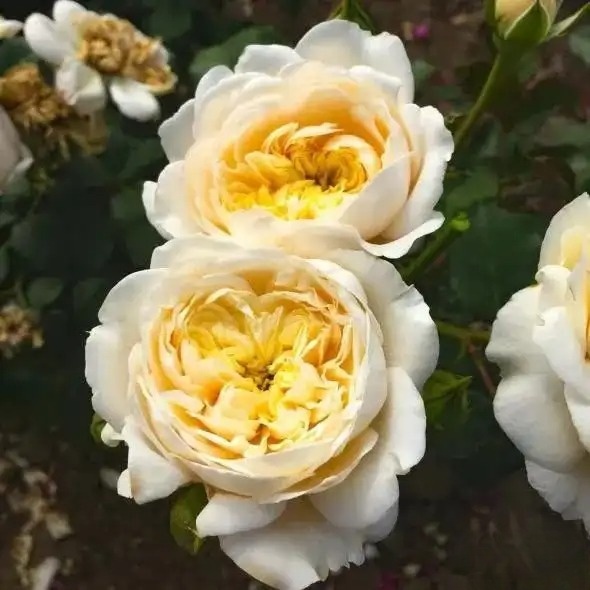
Creamy Rosemary
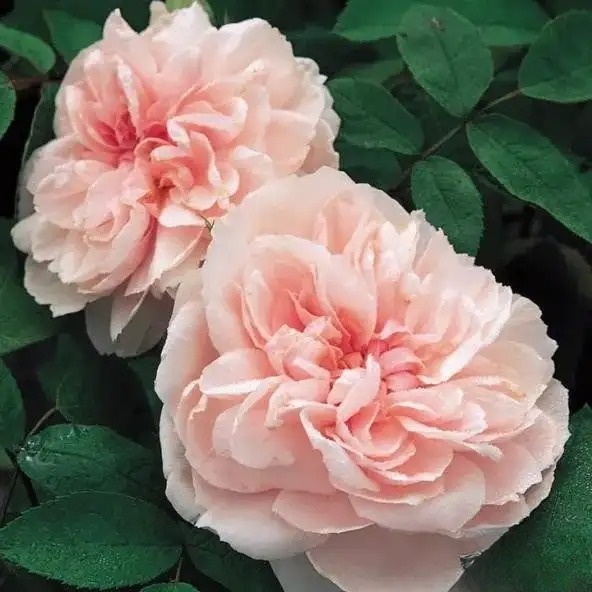
Barbara Austin

Also known as the big-flowered rose, the strong-flowered rose is a hybrid of the hybrid tea rose and the multiflora rose. The characteristics of the strain are that the plants are taller and stronger ; the flowering ability and cold resistance have inherited the best characteristics of both parents, the flower diameter is slightly smaller than the hybrid tea rose but larger than the multiflora rose, and the color range is also close to that of the parents; the bud shape, flower shape, leaves and prickles are similar to those of the hybrid tea rose.
1. Michelangelo
It is a large-flowered rose variety released by the French Rose Family in 1997. The flowers are gradient in color, golden yellow at first, then gradually fade to lemon yellow or cream yellow. The size is 12 cm, with a moderate peach and apricot fruity aroma, 60-100 cm in height, and it blooms repeatedly in multiple seasons. It has good disease resistance.
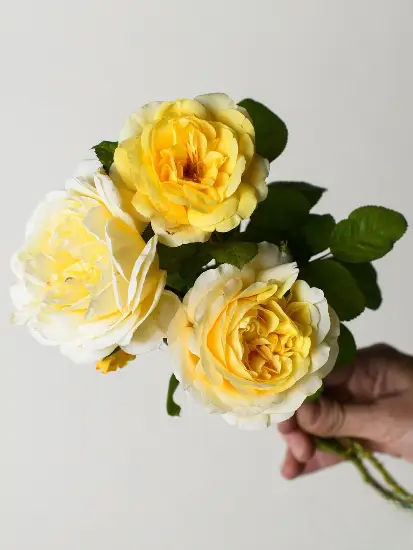
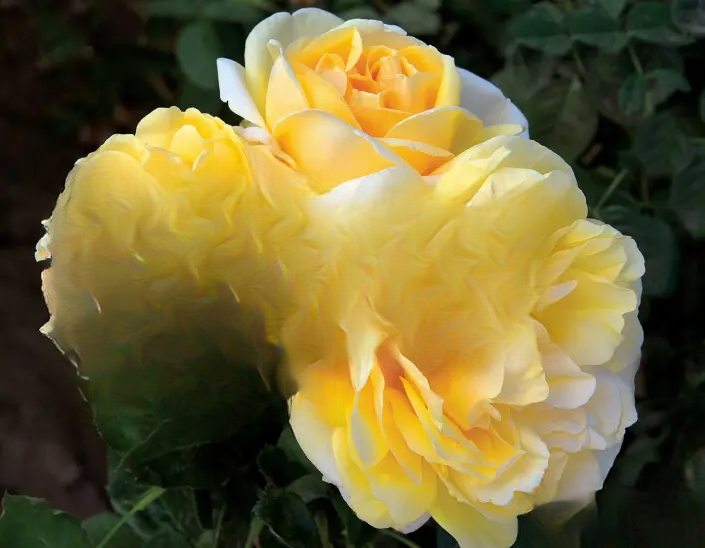
Michelangelo
2. Toulouse -Lautrec
Bred by the French Meiant family in 1992 , the flower is yellow in the middle and white on the outside, cup-shaped, 8-10 cm in size, with a very strong lemon verbena scent. The height is 70-120 cm, and it blooms repeatedly for many seasons.
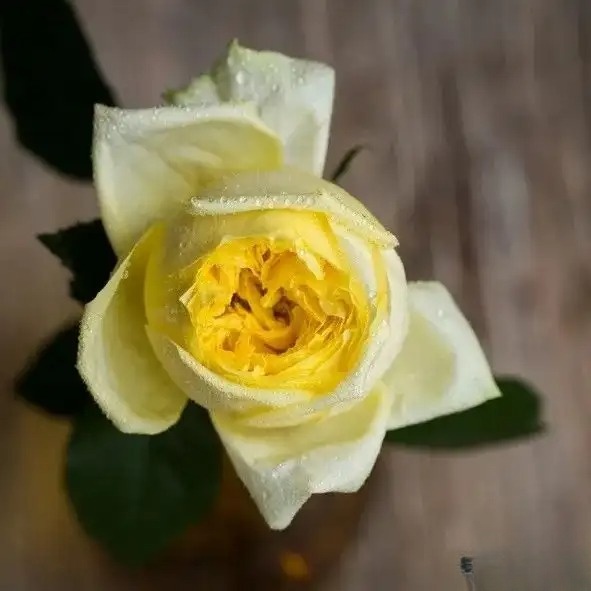
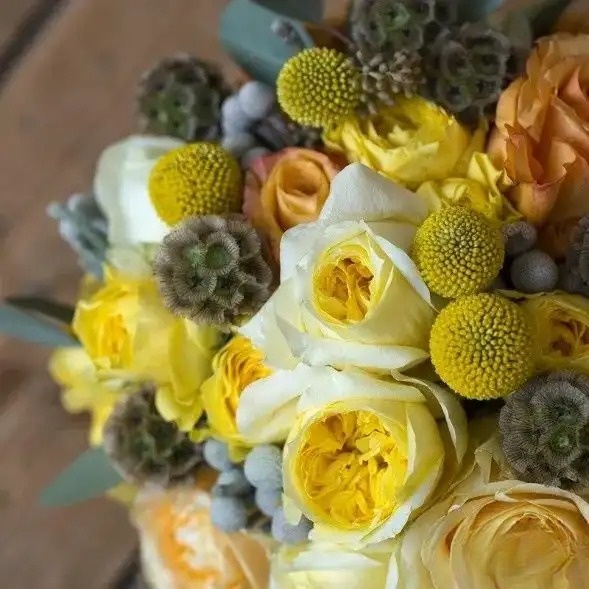
Toulouse Lautrec

Miniature roses are hybrids of Chinese miniature roses, multiflora roses, and sister roses. The characteristics of the variety are that the plant is short, only 15 to 30 cm high , and the branches, leaves, and thorns are much smaller than other roses. But the colors are rich, the flowers are beautiful, there are many flowers, they bloom frequently, and many varieties are double petals, and they have the characteristics of being fragrant and very cold-resistant.
Balcony series roses are large-flowered miniature roses with a plant height of about 30-40 cm recommended by the Dutch company DeRuiter. Currently, there are more than 30 known varieties. The advantages of the balcony series roses can be roughly summarized as follows: compact and short plant shape, fast re-flowering, frequent flowering, and good resistance.
1. Juice Balcony
Height 40-50cm, flower diameter: 5-6cm, double petals, orange, with a light fragrance, single flowers have a long flowering period, bloom frequently, and the flowers will change color. It can be planted in a 15-20 cm flowerpot and will bloom repeatedly for many seasons.
2. Saturn King Balcony
Saturn King Balcony is a very beautiful orange large-flowered micro-moon variety. The flower shape is a standard bun shape. The flowers are large and have a faint rose scent. The plant height is 30-40cm and the flower diameter is 9-10cm. It is suitable for planting in small pots. It blooms frequently and has a large number of flowers. It is easy to bloom out of the pot and repeat in multiple seasons. Moreover, the plant is short and has good branching, so it can fill a pot in a very short time.
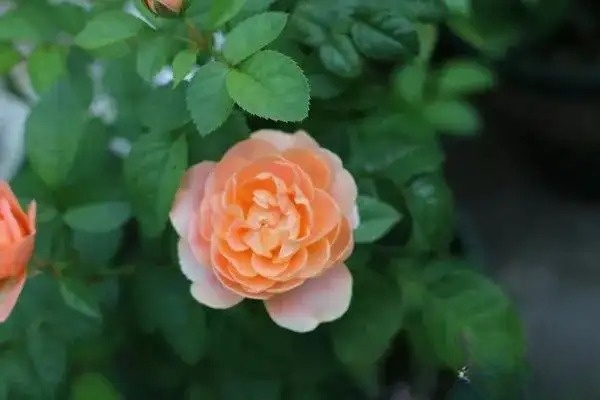
Juice Balcony
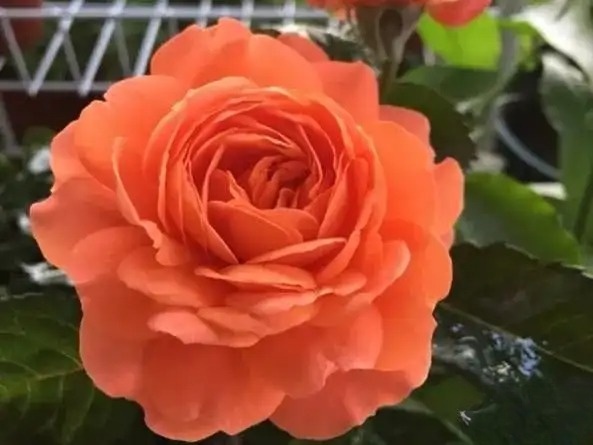
Saturn King Balcony

It is a hybrid of climbing rose and hybrid Changchun rose or hybrid tea rose or tea rose. The characteristics of the variety are that it can climb on flower gates, flower stands, flower walls and flower columns to form various shapes.
1. Royal carriage
Climbing rose, bright red, multi-headed flowers, flower diameter 10-13cm, double petals, can bloom continuously for many seasons, cold-resistant, light-loving .
2. Orange flame
Cultivated in Germany in 1992 , the plant grows fast, with fine and soft branches and many branches and leaves, dark green, and lush branches and leaves. The orange-red flame flower is bright in color, the flowering period is long, and it blooms continuously for many seasons. The flower shape is semi-double, large and beautiful, peony-shaped and bowl-shaped. The average flower diameter is about 8 cm, and each flower has about 20 orange-red petals. The flowers are large in number, and they bloom continuously in clusters. It is very suitable for garden planting and potted cultivation.
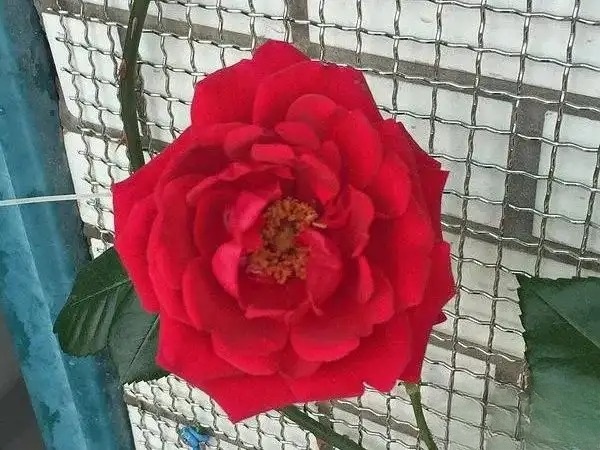
Royal carriage
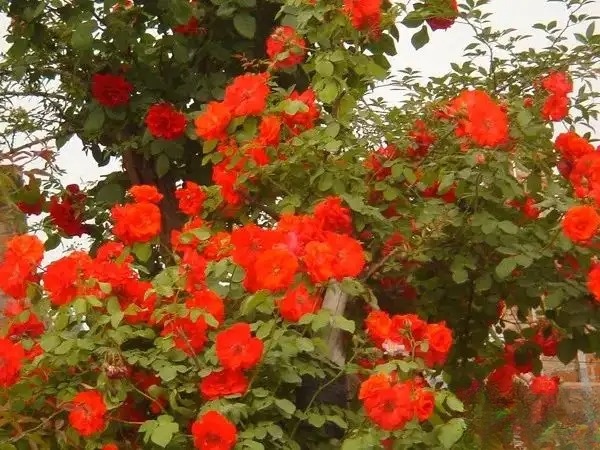
Orange flame

The natural flowering period is from April to September. The flowers are large and radiate from the inside to the outside. They have a strong fragrance and can be widely used in gardening and cut flowers. Roses are highly adaptable, cold-resistant and drought-resistant. They can be planted in the ground or in pots. They are suitable for beautifying courtyards, decorating gardens, arranging flower beds, planting flower hedges and flower stands. Roses are easy to cultivate and can be used as cut flowers, bouquets and various flower baskets. Rose flowers can be used to extract essences and can be used as medicine. They also have good antifungal and synergistic anti-resistant fungi activity.
(1) Landscaping
Roses are indispensable in gardening and are the most frequently used flower in gardens in the north and south. Roses are the main ornamental flowers in spring. They have a long flowering period, high ornamental value, and low price, and are loved by gardens everywhere. They can be used to arrange flower beds, flower borders, and garden flowers in gardens, and can be used to make rose bonsai, cut flowers, flower baskets, bouquets, etc.
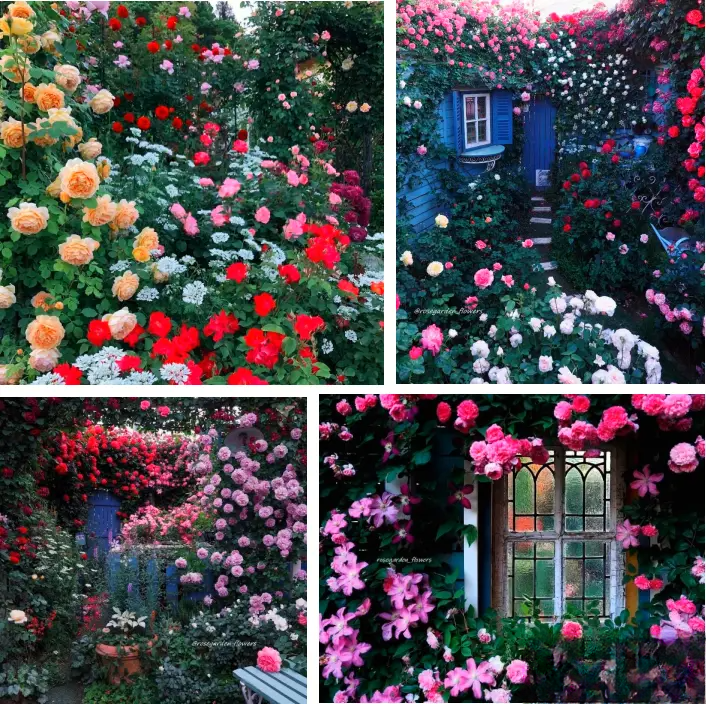
Application of roses in the garden
(2) Environmental protection
Roses can be made into continuous flower hedges, flower screens, and flower walls for offices, schools, residential areas, urban squares, etc. They can not only purify the air and beautify the environment, but also greatly reduce noise pollution in the surrounding areas and alleviate the greenhouse effect in summer cities. Roses are also good at absorbing harmful gases, such as hydrogen sulfide, hydrogen fluoride, benzene, and phenol. At the same time, they have strong resistance to sulfur dioxide and nitrogen dioxide. Therefore, roses are also good flowers and trees for protecting the human living environment.
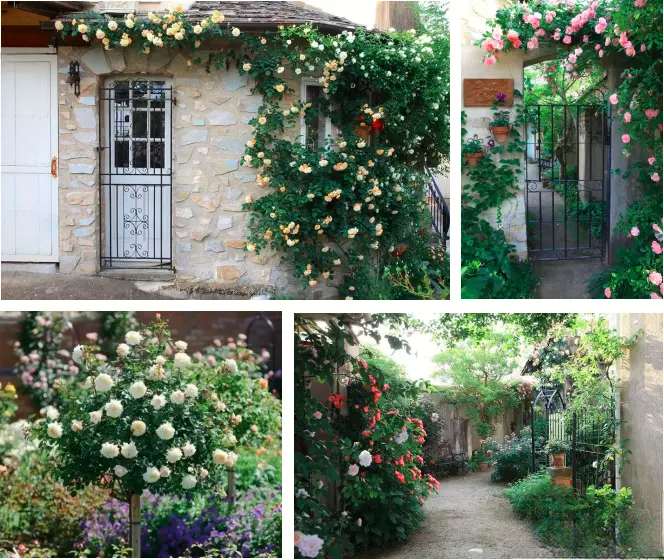
Rose hedges, screens, and walls
(3) Medicinal value
The flowers can be used to extract spices. The roots, leaves and flowers can all be used as medicine, which has the effects of promoting blood circulation, reducing swelling, and reducing inflammation and detoxification.
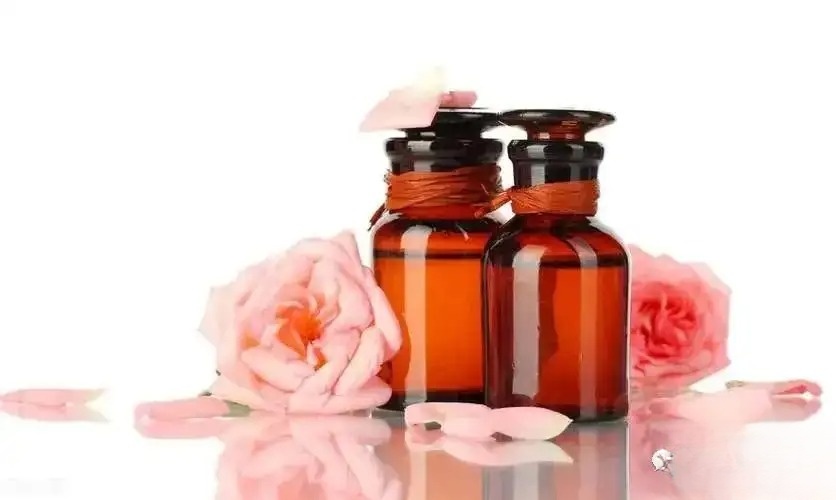
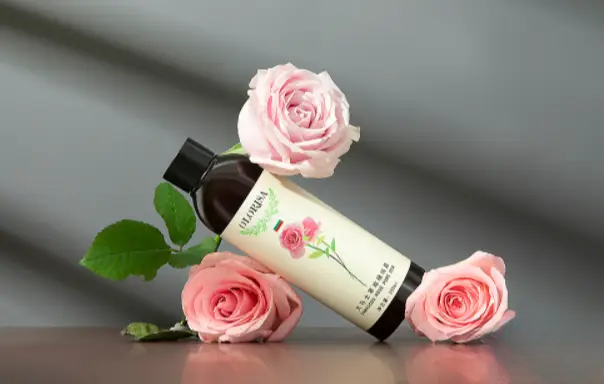
Rose cosmetics
Shaanxi Agricultural Sciences official website:
http://sxnykx./ch/index.aspx
Web Editor: Xue Wei
Editor-in-charge: Gao Lijuan
Final judge: Yang Jitao